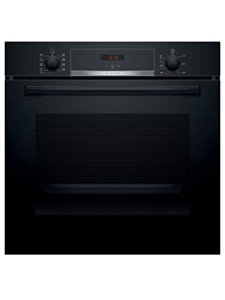The Comprehensive Guide to Built-In Ovens: Maximizing Kitchen Efficiency and Style
Built-in ovens are an important function in contemporary cooking areas, merging performance with sleek design. They offer a smooth appearance, improve space efficiency, and frequently included sophisticated functions that raise the cooking experience. This article will look into the different types of built-in ovens, their advantages, necessary factors to consider throughout purchase, and maintenance ideas.
What is a Built-In Oven?
A built-in oven is developed to be housed within kitchen cabinetry, providing an integrated appearance that saves counter area and improves the aesthetics of a kitchen. Unlike freestanding ovens, built-ins supply versatility in regards to positioning and can be picked to match the kitchen's design.
Types of Built-In Ovens
There are several types of built-in ovens, each dealing with various cooking requirements:
| Type | Description | Suitable Use |
|---|---|---|
| Single Oven | A standard oven with one cooking compartment. | Daily cooking, baking. |
| Double Oven | Two separate oven compartments, permitting multi-tasking. | Big meals, multi-course cooking. |
| Wall Oven | Set up at eye level, normally with innovative features. | Space-saving designs, ergonomic cooking. |
| Stove | Features a fan to flow hot air, cooking food uniformly. | Roasting, baking, and more. |
| Steam Oven | Makes use of steam for cooking, keeping moisture and nutrients. | Healthy cooking, baking bread. |
| Microwave Oven | Integrates microwave and routine oven functions. | Quick meals, reheating. |
Benefits of Built-In Ovens
Built-in ovens provide various benefits, that makes them a popular option among house owners. Some crucial benefits consist of:
- Aesthetic Appeal: They can fit seamlessly into kitchen cabinets, developing an advanced and consistent appearance.
- Space Efficiency: By using vertical space, they help optimize kitchen energy, particularly in smaller sized locations.
- Advanced Features: Many come equipped with smart innovation, self-cleaning options, and accuracy cooking functions.
- Enhanced Accessibility: Wall ovens can be positioned at eye level, decreasing the requirement for bending and making it simpler to monitor cooking development.
- Adjustable Options: Built-in alternatives been available in numerous sizes, finishes, and styles, enabling tailored kitchen style.
Factors to consider When Choosing a Built-In Oven
When choosing a built-in oven, there are numerous factors to consider to ensure that the home appliance aligns with the user's cooking choices and kitchen design:
- Size and Capacity: Measure the setup space to guarantee the chosen oven fits. Consider the oven capacity based on cooking requirements.
- Kind of Cooking: Think about the favored cooking techniques-- do you bake, roast, steam, or cook quickly? This will determine the type of oven to pick.
- Functions: Evaluate clever features, temperature probes, several cooking modes, and cleaning options.
- Energy Efficiency: Look for energy ratings to save money on utility expenses, specifically if the oven will be utilized regularly.
- Spending plan: Built-in ovens can vary significantly in cost, so it's necessary to develop a spending plan and think about long-term financial investment options.
Maintenance Tips for Built-In Ovens
To prolong the life of a built-in oven and preserve its performance, regular upkeep is crucial. Here are some useful suggestions:
- Cleaning: Regularly clean down the interior and outside surfaces. Use specialized cleaners for stainless steel finishes.
- Self-Cleaning: Utilize the self-cleaning function occasionally to keep the interior clean; however, avoid regular use to avoid wear and tear.
- Examine Seals: Inspect the door seals for any damage to avoid heat loss.
- Use Safe Cookware: Ensure that baking sheets and pans are compatible with the particular kind of oven to prevent damage.
- Routine Inspection: Schedule professional upkeep checks a minimum of when a year to guarantee whatever functions efficiently.
FAQs About Built-In Ovens
Q1: How do I pick the right size built-in oven for my kitchen?A: Measure
the assigned space for the oven and think about the overall capacity you need based on your cooking practices.
Q2: Are built-in ovens simple to install?A: Installation can be complex and frequently needs expert support, especially for electrical and gas connections. Q3: How typically ought to I clean my built-in oven? Ovens And Hobs : It's recommended to clean the oven monthly and utilize the self-clean function occasionally based on use frequency. Q4: Will a built-in oven increase the worth of my home?A: Yes, a top quality built-in oven can enhance the kitchen's appeal, possibly increasing home worth. Q5: Can built-in ovens
be used for all kinds of cooking?A: Most built-in ovens can handle a variety of cooking techniques, however specific types, like steam or convection ovens, excel in specific areas. Built-in ovens are a fantastic addition to contemporary cooking areas, mixing functionality with design. With their multiple types, advantages, and personalized alternatives, they cater to varied cooking
requirements while boosting total kitchen style. By considering size, type, functions, and maintenance, homeowners can select a built-in oven that serves their cooking style and lifestyle effectively. Purchasing a built-in oven not just raises kitchen looks but likewise changes the cooking experience, making meal preparation more enjoyable and efficient.

